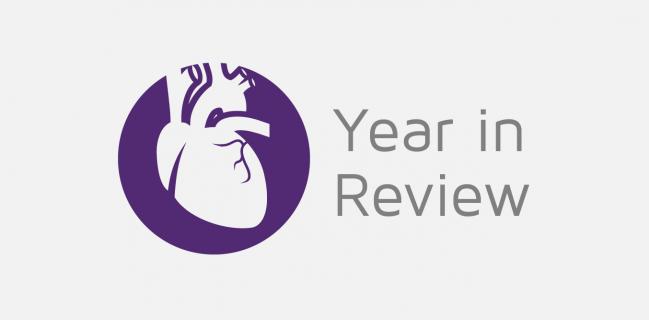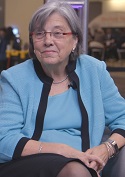Year in Review: DAPA-HF Tops Heart Failure News Amid Other Wins and Losses
Dapagliflozin’s big win this year was offset by the disappointment of PARAGON-HF, as HF devices made slow but steady progress.

DAPA-HF, showing that the diabetes drug dapagliflozin cuts CV mortality and heart failure hospitalizations in patients with reduced ejection fraction, even in those without diabetes, was the top heart failure story of 2019, experts told TCTMD.
The main DAPA-HF results were presented at the European Society of Cardiology (ESC) Congress in September, with additional details on nondiabetic patients and other subgroups presented at the American Heart Association Scientific Sessions last month.
“We already had preceding evidence that in patients at high cardiovascular risk, with type 2 diabetes, that HF hospitalizations were prevented,” JoAnn Lindenfeld, MD (Vanderbilt Heart and Vascular Institute, Nashville, TN), told TCTMD. However, because those large studies on empagliflozin (Jardiance; Boehringer Ingelheim/Eli Lilly), dapagliflozin (Farxiga; AstraZeneca), and canagliflozin (Invokana; Janssen) “were not well defined by heart failure, we didn't know much about those patients. So this was a really exciting finding,” she said.

“We all expect this to be reproduced within the next year with empagliflozin, and we’re all excited to see the studies that will be using the SGLT2 inhibitors in heart failure with preserved ejection fraction as well. I think it's one of the most broadly applied, really important changes in heart failure, and I’m sure it will be added to the guidelines next year for heart failure with reduced EF,” predicted Lindenfeld.
Of note, Boehringer Ingelheim/Eli Lilly announced top-line results from two empagliflozin trials last week, noting that neither had met their primary endpoints. Both EMPERIAL-Reduced and EMPERIAL-Preserved, which enrolled patients with reduced and preserved ejection fraction, respectively, had primary endpoints of change in exercise capacity at 12 weeks. The hard endpoint trials (using CV death/heart failure hospitalizations), including EMPEROR-Preserved and EMPEROR-Reduced are both ongoing.
According to Lindenfeld, the other important heart failure trial in 2019 was PARAGON-HF with sacubitril/valsartan (Entresto; Novartis), also released at ESC 2019. Here, though, the trial failed to eke out a win, showing no significant difference in the risk of hospitalization for heart failure or cardiovascular death in patients with heart failure with preserved ejection fraction, dashing hopes that this drug would serve this major, growing, unmet need.
“It was close and there were a number of things about the trial that had been questioned and discussed, but I think there was fairly substantial disappointment that this wasn't a positive trial,” Lindenfeld said.
Daniel Burkhoff, MD, PhD (Cardiovascular Research Foundation, New York, NY), also singled out DAPA-HF and PARAGON-HF as the two big heart failure trials of the year, suggesting that the disappointing news for the latter was more than offset by the good news for dapagliflozin. He, too, expects upcoming trials in this space, using other agents, to be positive.
Both Burkhoff and Lindenfeld pointed to progress with heart failure devices. The 3-year findings for COAPT, for example, “were very consistent with the 2-year results, suggesting the very large, long-term benefit,” said Lindenfeld. Of note, however, there has been lingering skepticism in 2019, particularly in Europe, as to whether the COAPT findings will be replicated in the real world, where patient selection is less rigorous.
Two devices focused on cardiac contractility also attracted attention in 2019, both getting US Food and Drug Administration approval through the agency’s breakthrough device pathway, Lindenfeld noted. These were the Optimizer Smart implantable pulse generator (Impulse Dynamics) for the treatment of chronic, moderate-to-severe heart failure in patients who are not suited for treatment with other devices such as cardiac resynchronization therapy. The other was the Barostim Neo baroreflex activation therapy device (CVRx), which earlier in the year demonstrated safety and efficacy in the BeAT-HF trial.

Manufacturers of both devices are facing some hurdles, in what Burkhoff characterized as the “flat commercial field” of cardiac rhythm management. Still, he said, both demonstrated the power of the FDA’s breakthrough therapy pathway in getting new technology more swiftly to the US market.
Burkhoff and Lindenfeld each gave a nod to ongoing studies of transcutaneously inserted interatrial shunt devices, intended to reduce wedge pressure during exercise, with larger trials expected for 2020 and 2021. Invasive left atrial pressure monitors also made progress in 2019, with devices like the V-LAP (Vectorious Medical Technologies) reporting very early results at the ESC Heart Failure Congress back in May. New postmarket data on the FDA-approved CardioMEMs device, which measures pulmonary artery pressures, supported safety and a reduction in heart failure hospitalizations with this device. Looking ahead, Burkhoff said he expects to see even more efforts in this space, with the field moving towards noninvasive and app-based means of assessing heart failure status.
Elsewhere, Burkhoff flagged progress with percutaneous left ventricular reshaping devices, while Lindenfeld pointed to the final results of MOMENTUM 3, released at the American College of Cardiology Scientific Session in March. The trial “demonstrated the benefits of the HeartMate 3 [left ventricular assist device] over HeartMate II, particularly in terms of device thrombosis but also in terms of a modest reduction in bleeding and stroke risk,” she said.
Finally, while the transthyretin stabilizer tafamidis (Vyndamax and Vyndaqel; Pfizer) was one of the big heart failure stories of 2018, significantly reducing mortality in adults with transthyretin amyloid cardiomyopathy in the ATTR-ACT trial, the drug also makes lists for 2019. Back in May, the FDA approved the novel agent following expedited review. “That's certainly another major step forward,” Lindenfeld said.
Note: Burkhoff is Director of Heart Failure, Hemodynamics, and MCS Research at the Clinical Trials Center of the Cardiovascular Research Foundation, the publisher of TCTMD.
Shelley Wood was the Editor-in-Chief of TCTMD and the Editorial Director at the Cardiovascular Research Foundation (CRF) from October 2015…
Read Full BioDisclosures
- Burkhoff reports being a consultant for Impulse Dynamics and Corvia, with additional research funding being paid to the Cardiovascular Research Foundation, where he is employed.
- Lindenfeld reports consulting for Boehringer Ingelheim, Abbott Vascular, Relypsa, Impulse Dynamics, Edwards Lifesciences, CVRx, and VWave, as well as receiving grants from AstraZeneca, the American Heart Association, and the National Institutes of Health.


Comments